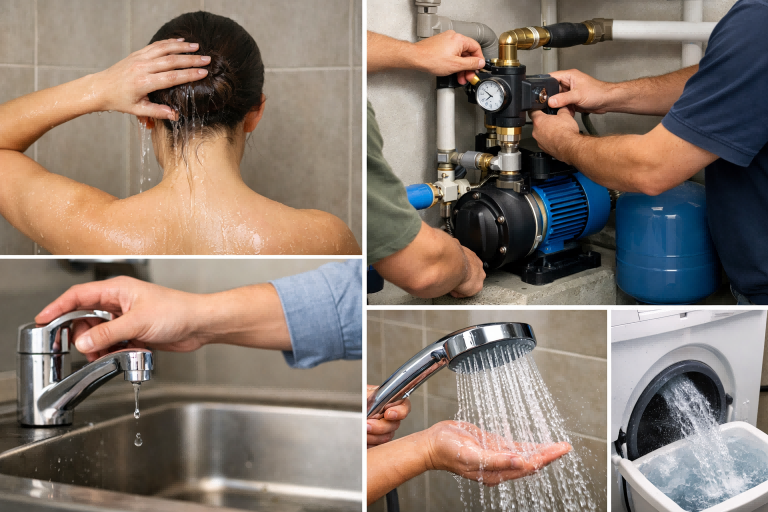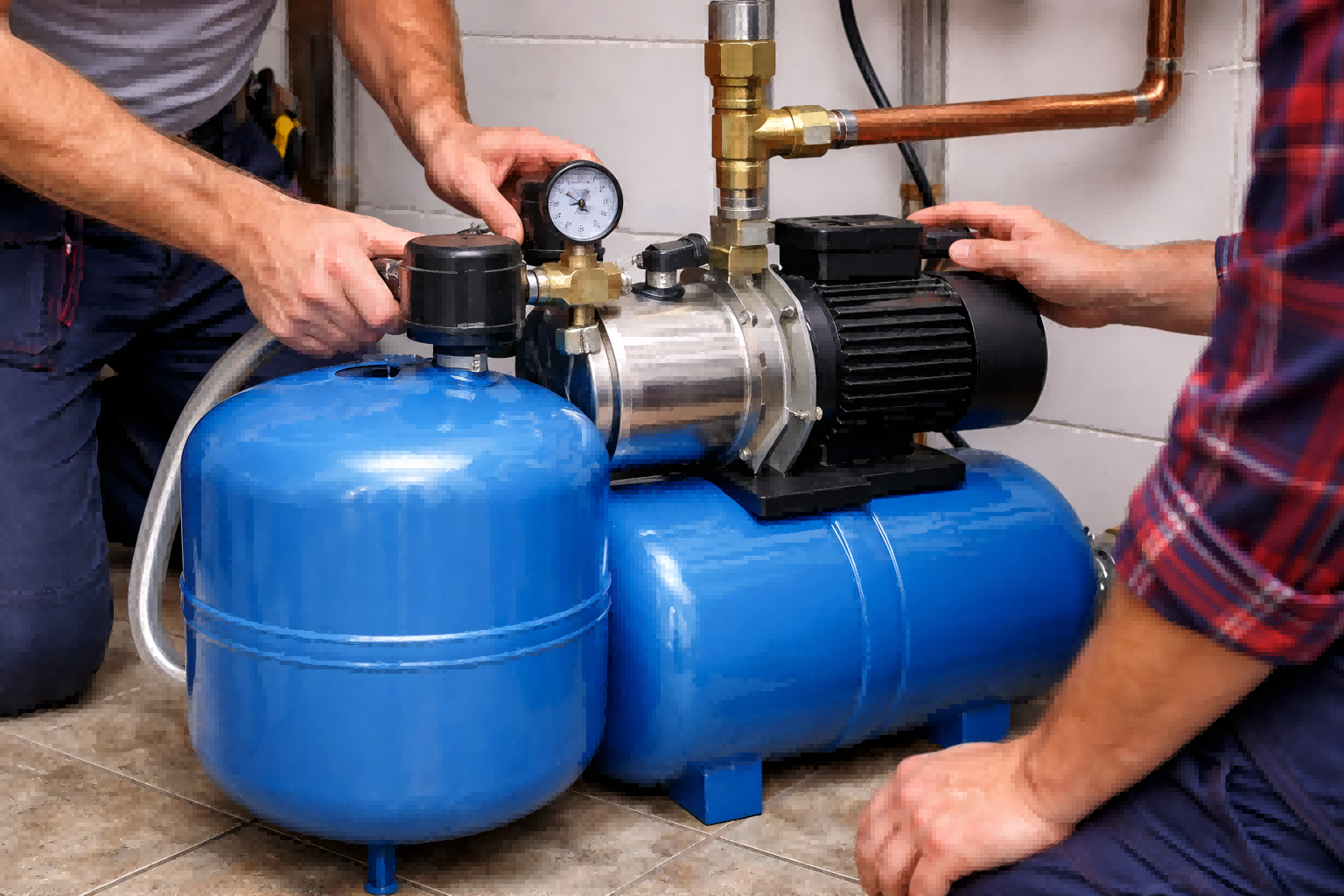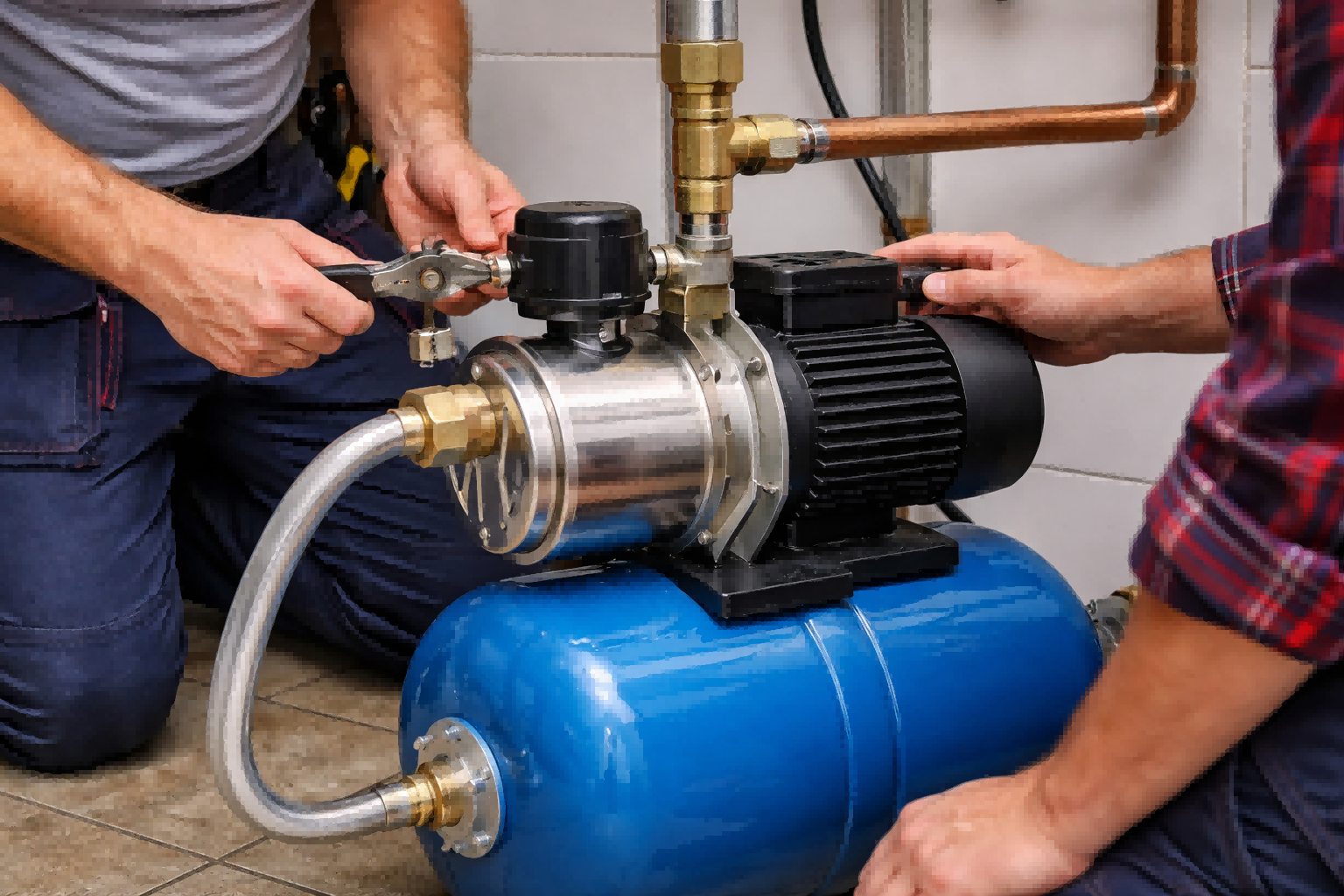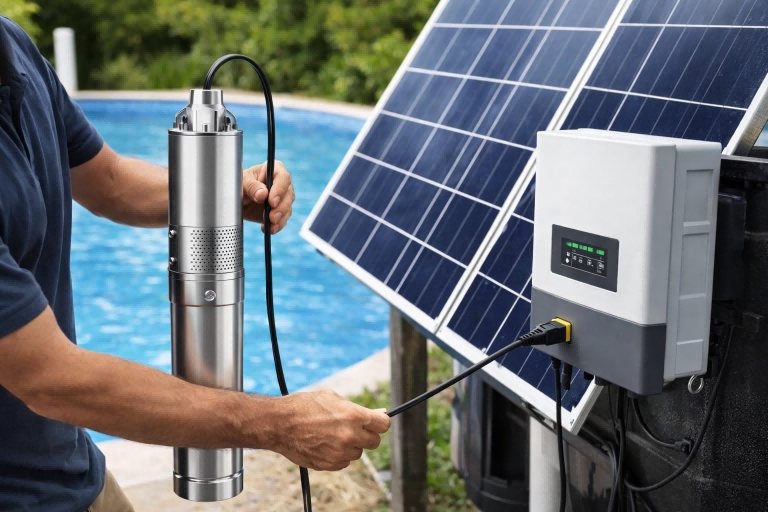Annoyed by weak showers and inconsistent water flow?
Low water pressure disrupts daily routines and reduces efficiency.
A dedicated booster pump is the professional solution to this common problem.
A booster pump is the specific type of pump designed to increase water pressure and improve flow in a hydraulic system. It works by taking existing pressure from a source and "boosting" it to the desired level for consistent, powerful water delivery throughout a property or facility.
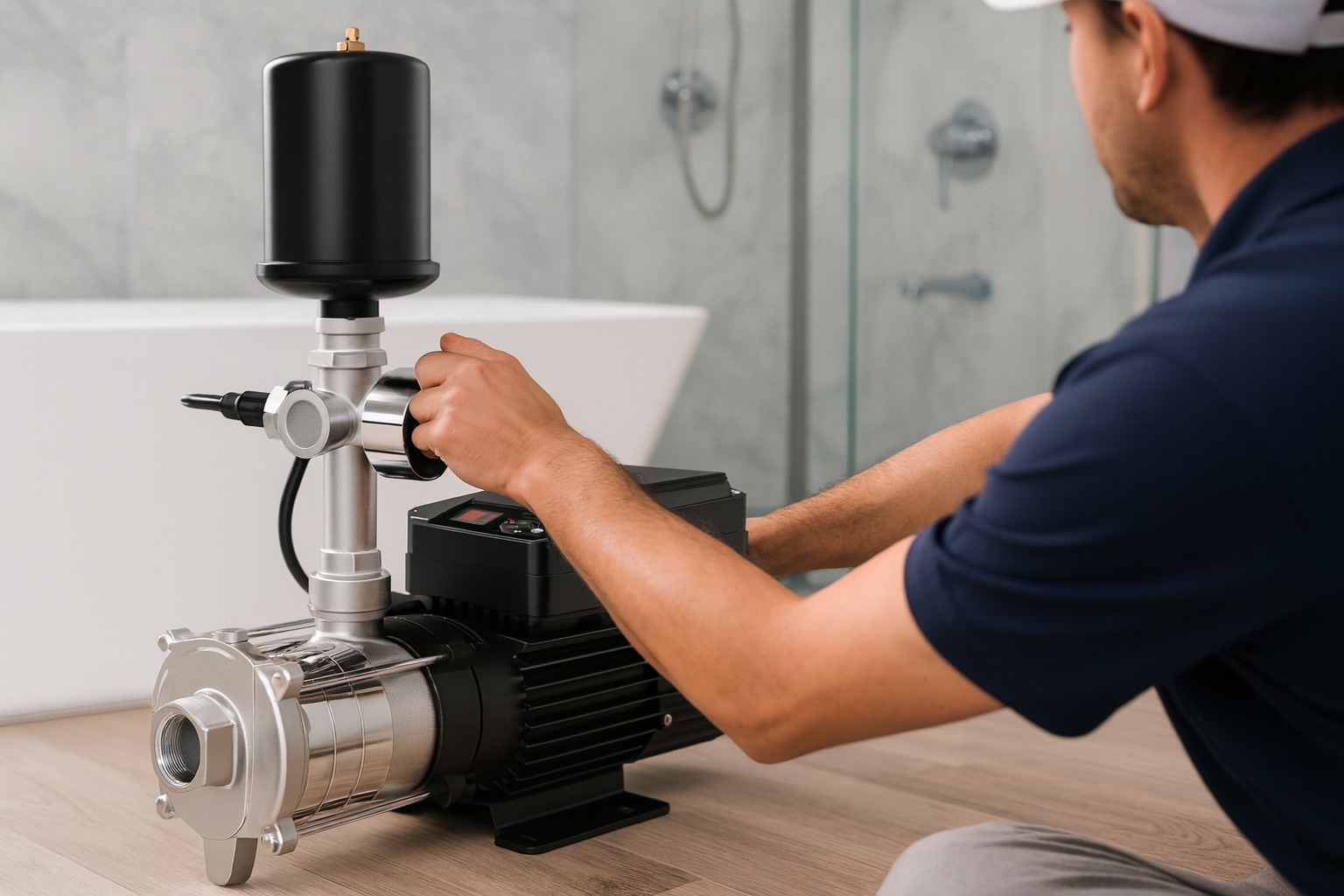
Knowing you need to increase water pressure is just the first step.
The real challenge lies in selecting the right type of pump technology to ensure you get reliable, efficient, and long-lasting performance.
Understanding the different options and the key factors involved is crucial to making a sound investment that solves your pressure problems for good.
Let's explore the essential considerations for choosing the perfect booster pump for your application.
When to Use a Booster Pump
Unsure if your low pressure is a pump problem or a plumbing issue?
Guessing can lead to costly mistakes and unresolved issues.
Identifying the root cause of the problem is essential before investing in new equipment.
A booster pump is necessary when your system's pressure is consistently low due to factors like height (in tall buildings), long pipe distances, or an inadequate municipal supply. It is not the correct solution for clogged pipes, partially closed valves, or a fundamentally flawed plumbing design.
Before committing to a booster pump, it's vital to correctly diagnose the reason for your low water pressure.
A booster pump is a powerful tool, but it must be applied to the right problem.
Installing a pump in a system with underlying issues can sometimes mask or even worsen the situation.
A careful evaluation will ensure that a booster pump is indeed the most effective and efficient solution for your needs.
Distinguishing Pump Needs from Plumbing Problems
First, perform a few simple checks.
Ensure all valves on your water line, including the main shutoff, are fully open.
A partially closed valve is a common and easily fixed cause of reduced pressure.
Consider the age and condition of your plumbing.
Older pipes, especially galvanized steel, can suffer from internal corrosion and scale buildup.
This restricts the pipe's diameter and severely hampers water flow, a problem a booster pump cannot fix.
If the low pressure is a recent development in an older property, clogged pipes might be the culprit.
Common Scenarios Requiring a Boost
A booster pump is the definitive solution in several specific situations.
High-rise residential and commercial buildings are prime candidates.
Water pressure from the municipal supply is often insufficient to reach the upper floors with adequate force due to gravity.
A booster system is essential to provide consistent pressure to every unit.
Properties located at a higher elevation than the water main or at the end of a long supply line also frequently experience low pressure.
The booster pump compensates for the pressure lost over distance and elevation.
Many industrial processes and specialized systems require higher pressure than what is typically available.
Applications like reverse osmosis (RO) systems, high-pressure cleaning, and complex irrigation networks depend on booster pumps to function correctly.
The Goal: Stable and Sufficient Pressure
Ultimately, a booster pump is used to achieve two things: sufficient pressure and stable pressure.
It ensures that when you open a tap or start an appliance, the water performs as expected.
It also helps to maintain that pressure even when multiple outlets are being used simultaneously.
Modern systems are designed not just to boost, but to intelligently regulate pressure for optimal performance and user comfort.
The Required Flow Rate and Pressure
Choosing a pump without knowing your flow and pressure needs?
This common mistake often leads to poor performance or wasted energy.
Proper calculation is the key to selecting a correctly sized and efficient system.
To choose the right pump, calculate your required flow rate by adding the demand of all fixtures that might run at once. Then, determine the required pressure by adding the desired outlet pressure, elevation losses, and friction losses, and subtracting your existing supply pressure.
Sizing a booster pump is not about choosing the most powerful model.
It's about precision.
An undersized pump will fail to meet your demands, leaving you with disappointing results.
An oversized pump will waste significant amounts of energy through excessive cycling and potentially damage your plumbing through over-pressurization.
A few key calculations will guide you to a perfectly matched pump for your specific requirements.
Calculating Your Target Flow Rate
The flow rate is the volume of water the pump needs to deliver, usually measured in gallons per minute (GPM) or liters per minute (LPM).
To determine this, you must estimate your peak water demand.
This is the maximum amount of water you would use at any single moment.
List all the water-using fixtures in your building, such as showers, sinks, toilets, and washing machines.
Find the flow rate for each one (often printed on the fixture or available from the manufacturer).
Then, add up the flow rates of all fixtures that could realistically be used at the same time.
For example, a home might simultaneously run two showers and a washing machine.
Example Peak Flow Rate Calculation
| Fixture | Typical Flow Rate (GPM) |
|---|---|
| Shower 1 | 2.5 |
| Shower 2 | 2.5 |
| Washing Machine | 2.0 |
| Total Peak Demand | 7.0 GPM |
This total figure represents the minimum flow rate your booster pump must be able to provide to avoid a pressure drop during peak usage.
Understanding Total Required Pressure
The required pressure, often calculated as Total Dynamic Head (TDH), is the total force the pump must generate.
It is composed of several factors.
- Static Lift: This is the vertical distance in feet or meters that the water needs to be pushed upwards from the pump to the highest outlet.
- Desired Pressure: This is the target water pressure you want at the fixture, typically between 40 and 60 PSI for residential applications. Every 1 PSI of pressure is equivalent to 2.31 feet of lift.
- Friction Loss: As water moves through pipes, it loses pressure due to friction. This loss depends on the pipe's length, diameter, material, and the number of bends and fittings. Longer and narrower pipes result in higher friction loss.
The pump's required output pressure is calculated by adding these factors together and then subtracting the pressure of your incoming water supply.
A Modern Approach to Pressure and Flow
Traditional pumps operate on a simple on/off cycle.
They run at full power until a preset pressure is reached, then shut off.
This leads to pressure fluctuations and high energy consumption.
Modern intelligent pumps use advanced technology to provide a much better experience.
They can adjust their speed and power in real-time to match the exact flow demand.
If only one tap is open, the pump runs slowly.
If multiple taps are open, it speeds up instantly.
This ensures a perfectly constant water pressure at all times, eliminates pressure swings, reduces energy use, and significantly extends the life of the pump.
Core Drive Technology and Power Source
Tired of noisy pumps that consume excessive electricity?
Older pump technologies are often inefficient and create disruptive noise.
Modern advancements offer a quiet, energy-saving, and more reliable alternative.
Modern high-efficiency booster pumps use a Permanent Magnet Synchronous Motor (PMSM) paired with a Variable Frequency Drive (VFD). This combination allows the pump to adjust its speed in real-time, providing constant pressure while operating almost silently and consuming significantly less energy.
The engine of a pump—its motor and control system—determines its performance, efficiency, and operational lifespan.
While many types of motors and power sources exist, the most advanced solutions are engineered for intelligent operation and durability.
The synergy between a high-tech motor and a smart controller is what separates a basic booster pump from a high-performance water pressure system.
This core technology is the most important factor in delivering quiet, stable, and cost-effective operation.
The Advantage of Smart Drive Technology
The combination of a PMSM motor and a VFD controller is the cornerstone of modern pump design.
Here's why this pairing is superior.
- Constant Pressure: The VFD continuously monitors system pressure. It adjusts the motor's speed (RPM) in real-time to precisely match water demand, ensuring the pressure at your tap remains perfectly stable, whether one faucet is open or ten.
- Energy Efficiency: A traditional pump always runs at 100% speed, wasting enormous amounts of electricity. A VFD system only uses the exact amount of power needed for the current demand, often reducing energy consumption by up to 50% or more.
- Ultra-Quiet Operation: The precise control and smooth operation of the PMSM motor, free from the abrupt on/off cycling of older pumps, results in extremely low noise levels, often below 50 decibels—quieter than a library.
- Soft Start and Stop: The VFD gently ramps the motor up to speed and slows it down, rather than starting and stopping it abruptly. This "soft start" function dramatically reduces mechanical stress and prevents the damaging hydraulic shock known as water hammer.
Built for Demanding Electrical Conditions
The power source compatibility is another crucial aspect.
Booster pumps must be able to perform reliably even when the electrical grid is not perfect.
Look for pumps designed with wide voltage adaptability.
Top-tier systems are engineered to operate flawlessly across a broad voltage range, for instance from 165V to 260V.
This ensures consistent performance and protects the motor from damage in areas with fluctuating power supplies, making them suitable for a wide variety of global markets and remote locations.
Selecting the Right Power Source
While most residential and commercial booster pumps run on electricity, some applications in remote or off-grid locations may require a gas or diesel engine.
However, for any application connected to a power grid, an electric motor with VFD technology is the premier choice.
It offers unmatched control, efficiency, and quiet operation, making it the standard for modern water pressure boosting systems.
The Overall Size and Weight of the Pump
Need a powerful pump but have limited installation space?
Bulky, heavy pumps can be difficult to install and maintain.
A compact and well-designed unit offers greater flexibility without sacrificing performance.
The size of a booster pump should correspond to its required capacity, but modern designs prioritize a compact footprint for easier installation. This is especially important for residential retrofits or in mechanical rooms where space is at a premium. Always select the correct size for the application.
The physical dimensions of a pump are a practical consideration that directly impacts installation and serviceability.
While larger pumps traditionally meant more power, modern engineering focuses on maximizing performance within a smaller, more integrated package.
The goal is to find a pump that delivers the required flow and pressure while fitting comfortably into its intended location.
This balance of power and size is a key indicator of advanced design.
Matching Size to Application
The pump must be sized correctly for the job.
As previously discussed, this starts with calculating the required flow and pressure.
These performance metrics will dictate the necessary pump and motor size.
A single-family home will require a much smaller and more compact pump than a multi-story commercial building.
However, even within a specific performance class, there can be significant differences in physical size and weight between models.
A pump that utilizes integrated components, such as a built-in pressure tank and controller, will typically have a much smaller footprint than a system requiring separate installation of these parts.
Benefits of a Compact and Integrated Design
Modern booster pumps are often designed as "all-in-one" systems.
This means the pump, motor, pressure sensor, check valve, and controller are all housed in a single, compact unit.
This approach offers several key advantages.
- Simplified Installation: With fewer separate components to connect, installation is faster, easier, and less prone to errors.
- Space Savings: An integrated design is ideal for applications where space is limited, such as under a sink, in a small utility closet, or on a crowded wall in a mechanical room.
- Enhanced Reliability: Factory-integrated components are designed to work together seamlessly, reducing the potential for compatibility issues and leaks.
Considering Portability and Materials
In some applications, a pump may need to be portable.
This is common for temporary uses in construction or agriculture.
In these cases, weight becomes a more critical factor.
The materials used in the pump's construction also influence its weight and durability.
Pumps with housings made from advanced, UV-resistant polymers can be lighter and more resistant to outdoor elements than their all-metal counterparts, while still using premium materials like stainless steel for all critical internal wetted parts.
Conclusion
Choosing the right booster pump means matching advanced technology with your specific flow and pressure needs to achieve consistent, quiet, and energy-efficient performance.
Frequently Asked Questions
What PSI should a booster pump be set at?
A residential booster pump is typically set to deliver between 40 and 60 PSI. This range provides strong pressure for showers and appliances without straining the plumbing system.
Can a booster pump be too powerful?
Yes, an oversized booster pump can damage pipes, fittings, and appliances through excessive pressure and water hammer. It's crucial to correctly size the pump for your system's requirements.
Where is the best place to install a booster pump?
The ideal location is on the main water line just after the water meter and main shutoff valve. This ensures it boosts pressure for the entire property.
Do I need a pressure tank with my booster pump?
Modern VFD booster pumps often have small, integrated pressure tanks. These are used to dampen pulsations and reduce pump cycling, which extends motor life and prevents water hammer.
How much electricity does a booster pump use?
Electricity usage varies greatly. A modern VFD booster pump is highly efficient, using up to 50% less energy than a traditional fixed-speed pump by only running as fast as needed.
Can a booster pump pull water from a well?
Some booster pumps, particularly jet pumps and centrifugal pumps, are designed to draw water from shallow wells. For deep wells, a submersible well pump is the correct choice.
What is the difference between a booster pump and a circulation pump?
A booster pump is designed to increase pressure within a system. A circulation pump is designed to move water within a closed loop, like in a hot water heating system, without significantly increasing pressure.


